Related Research Articles
Stanley Travis Rice Jr. was an American poet and artist. He was the husband of author Anne Rice.

Sir Martin Louis Amis was an English novelist, essayist, memoirist, screenwriter and critic. He is best known for his novels Money (1984) and London Fields (1989). He received the James Tait Black Memorial Prize for his memoir Experience and was twice listed for the Booker Prize. Amis was a professor of creative writing at the University of Manchester's Centre for New Writing from 2007 until 2011. In 2008, The Times named him one of the 50 greatest British writers since 1945.
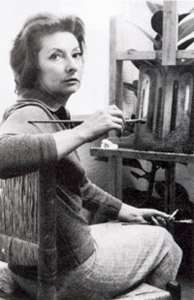
María de los Remedios Alicia Rodriga Varo y Uranga was a Spanish surrealist painter working in Spain, France, and Mexico.

Belle and Sebastian is an anime adaption of the 1965 novel Belle et Sébastien by French author Cécile Aubry. The series ran on the Japanese network NHK from April 7, 1981 to March 24, 1982. It consists of 52 episodes and was a co-production of MK Company, Visual 80 Productions and Toho Company, Ltd.
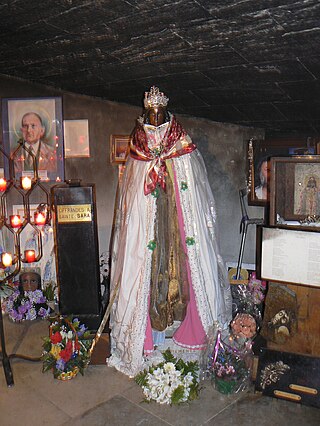
Saint Sarah, also known as Sara-la-Kâli, is the patron saint of the Romani people. The center of her veneration is Saintes-Maries-de-la-Mer, a place of pilgrimage for Roma in the Camargue, in Southern France. Legend identifies her as the servant of one of the Three Marys, with whom she is supposed to have arrived in the Camargue. Saint Sarah also shares her name with the Hindu goddess Kali who is a popular deity in northern India from where the Romani people originate. The name "Sara" itself is seen in the appellation of Durga as Kali in the famed text Durgasaptashati.

Elizabeth Jane Howard, was an English novelist. She wrote 12 novels including the best-selling series TheCazalet Chronicle.

The Ursari or Richinara are the traditionally nomadic occupational group of animal trainers among the Romani people.
Ami McKay is an American Canadian novelist, playwright and journalist.
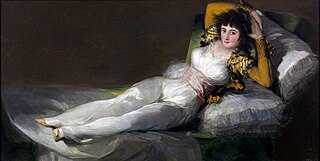
La maja vestida is an oil painting on canvas created between 1800 and 1807 by the Spanish Romantic painter and printmaker Francisco Goya. It is a clothed version of the earlier La maja desnuda, which was created between 1795 and 1800. The identity of the model and that of the commissioner have not been confirmed. However, art historians and scholars have suggested she is María Cayetana de Silva or Godoy's mistress Pepita Tudó.

Bronisława Wajs, commonly known by her Romani name Papusza, was a Polish-Romani classic poet and singer.
Uruguayan Americans are Americans of Uruguayan ancestry or birth. The American Community Survey of 2006 estimated the Uruguayan American population to number 50,538, a figure that notably increased a decade later.

Bruno Fonseca was an American artist who shifted between abstract and figurative styles and worked in both painting and sculpture.

Gonzalo Fonseca was a Uruguayan artist known for his stone sculpting. He originally studied to be an architect at the University of Montevideo, but discovered modern art in 1942 after working in the Taller Torres-Garcia workshop. He studied painting in the workshop until 1949, and became interested in pre-Columbian art during that time. Fonseca is frequently associated with the movement Universal Constructivism.
Throughout the life of the poet Philip Larkin, multiple women had important roles which were significant influences on his poetry. Since Larkin's death in 1985, biographers have highlighted the importance of female relationships on Larkin: when Andrew Motion's biography was serialised in The Independent in 1993, the second installment of extracts was dedicated to the topic. In 1999, Ben Brown's play Larkin with Women dramatised Larkin's relationships with three of his lovers, and more recently writers such as Martin Amis, continued to comment on this subject.
Fernanda Eberstadt is an American writer living in France.

Women Surrealists are women artists, photographers, filmmakers and authors connected with the surrealist movement, which began in the early 1920s.

Lemmons, also known as Gladsmuir and Gladsmuir House, was the home of novelists Kingsley Amis (1922–1995) and Elizabeth Jane Howard (1923–2014) on the south side of Hadley Common, Barnet, on the border of north London and Hertfordshire.
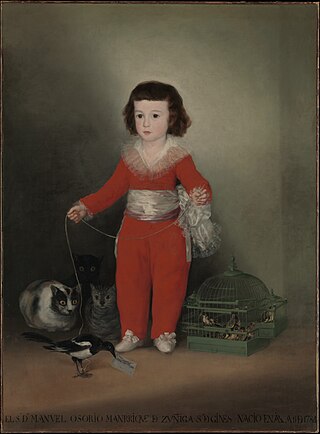
Manuel Osorio Manrique de Zúñiga is a large full-length portrait in oil painted in 1787–88 by the Spanish artist Francisco Goya. It depicts a boy three or four years of age, standing in red clothes, with birds and cats. It is also known as Goya's "Red Boy". It was described by art historian Claus Virch in 1967 as "one of the most appealing and successful portraits of children ever painted, and also one of the most famous". The painting has been held by the Metropolitan Museum of Art in New York since 1949.
Bury Me Standing: The Gypsies and Their Journey is a non-fiction book on the lives of the Romani people by the American-Uruguayan writer Isabel Fonseca published in 1995. The book is organized in eight chapters and contains black and white photographs and maps.
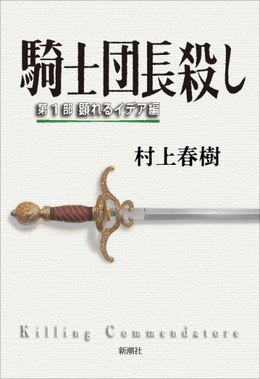
Killing Commendatore is a 2017 novel written by Japanese writer Haruki Murakami. It was first published in two volumes–The Idea Made Visible and The Shifting Metaphor, respectively–by Shinchosha in Japan on 24 February 2017. An English translation by Philip Gabriel and Ted Goossen was released as a single, 704-page volume on 9 October 2018 by Alfred A. Knopf in the US and by Harvill Secker in the UK.
References
- 1 2 3 Conti, Samantha. "Scenes From a Marriage". W. Retrieved 2017-12-04.
- ↑ Rix, Juliet (2009-05-29). "My family values: Isabel Fonseca, writer". The Guardian. ISSN 0261-3077 . Retrieved 2017-12-04.
- 1 2 3 4 5 McGrath, Charles (2008-04-20). "Isabel Fonseca, a Novelist With a Back Story Attached". The New York Times . ISSN 0362-4331 . Retrieved 2017-12-04.
- 1 2 3 "Isabel Fonseca – Penguin Random House". www.penguinrandomhouse.com. Retrieved 26 May 2018.
- ↑ "Isabel Fonseca – Charlie Rose" . Retrieved 2017-12-04.
- ↑ Wiseman, Eva (2009-05-09). "What I know about men: Isabel Fonseca writer, 46, married with two daughters". The Guardian. ISSN 0261-3077 . Retrieved 2017-12-04.
- ↑ "The Martin Amis Web". www.martinamisweb.com. Retrieved 2017-12-04.